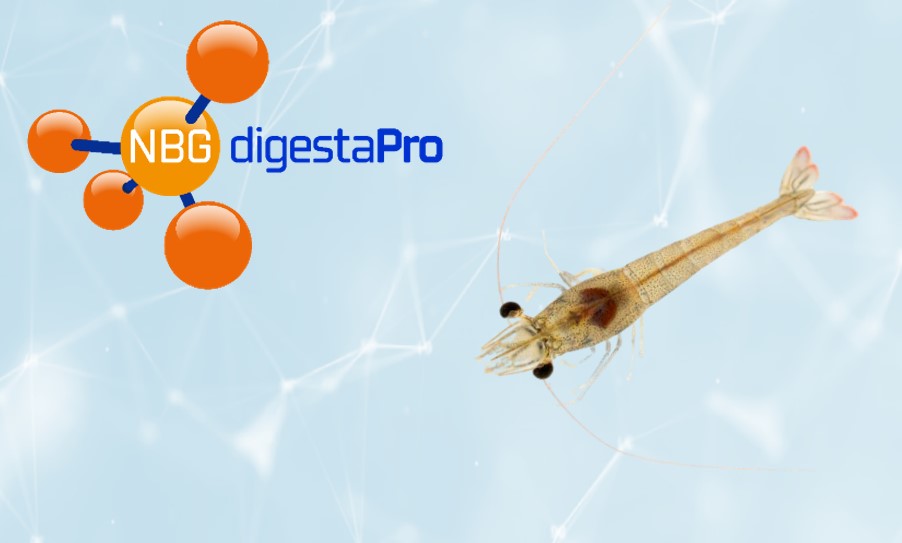The use of fish hydrolysates in shrimp nutrition / NBG DigestaPro

Dear colleagues,
The growth and profitability of the aquaculture industry, especially in the production of Pacific white shrimp, has led to the search for sustainable and efficient alternatives for feeding these animals. One of these alternatives is fish hydrolysates.
What are fish hydrolysates?
Fish hydrolysates are products obtained through hydrolysis, a process that “cuts” the bonds between the amino acids that make up the protein. This process results in low-molecular-weight fractions that promote nutrient absorption, making them more digestible and improving functional properties such as digestibility.
Benefits of fish hydrolysates in shrimp nutrition
Fish hydrolysates have been shown to be a powerful attractant that increases shrimp growth rate by reducing losses due to uneaten feed, lowering the feed conversion ratio and, consequently, feed costs.
Furthermore, bioactive peptides derived from fish have different physiological functions, mainly associated with cell signaling, causing structural, molecular, and cellular changes with biological effects, such as antioxidant, antimicrobial, and immunomodulatory effects.
Replacing fishmeal with low doses of fish hydrolysates
With the growing interest in formulating aquafeeds based on plant proteins and alternative sources to replace fishmeal, marine protein hydrolysates have emerged as a very promising solution.
The results of recent studies show that fish hydrolysates can be used at low doses to replace high percentages of fishmeal in shrimp diets, while maintaining good growth performance, well-being and body chemistry, and digestive enzyme activity.
In addition, fish hydrolysates promote the development of the hepatopancreas and the increase of beneficial bacteria in the intestine.
NBG DigestaPro
At Nutribiogenics, we have developed NBG DigestaPro, a fish hydrolysate in which we have taken the utmost care to preserve the bioactive peptides thanks to the precise combination of a targeted enzymatic hydrolysis process and an ultrafiltration process.
Conclusion
The use of fish hydrolysates in shrimp nutrition offers a very interesting alternative for the aquaculture industry. As demand for shrimp continues to grow, it is essential to explore and adopt these alternatives to ensure the industry’s sustainability and profitability.
For more information on fish hydrolysates in shrimp nutrition, we attach a link to an interesting article on the use of fish hydrolysates in shrimp:

